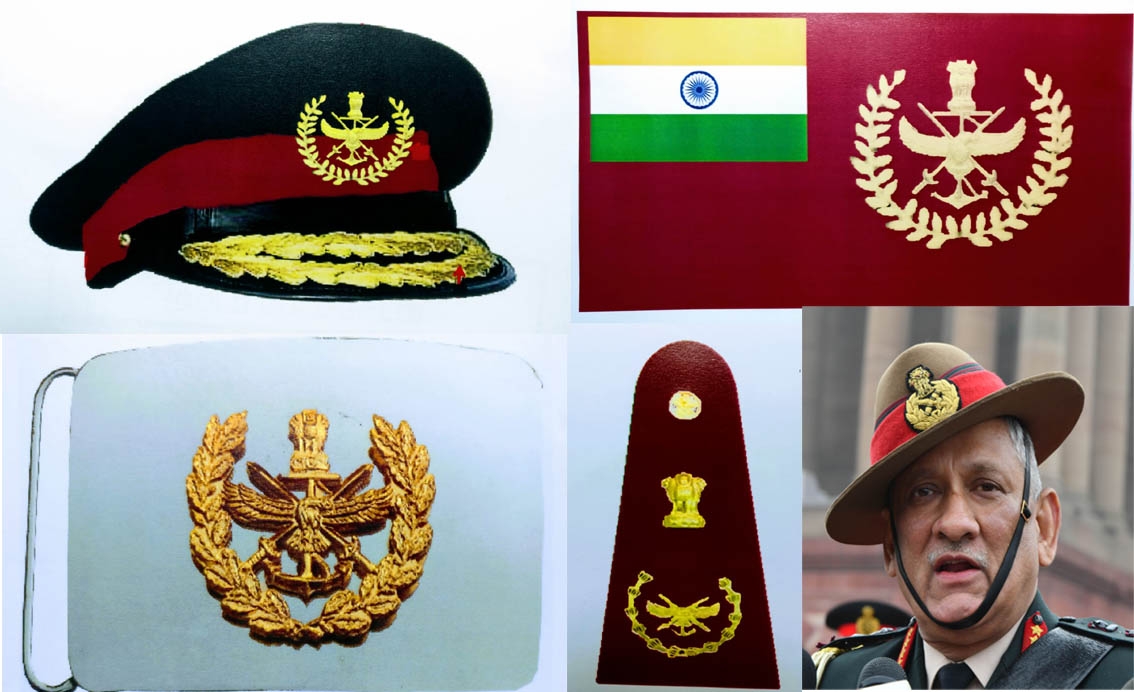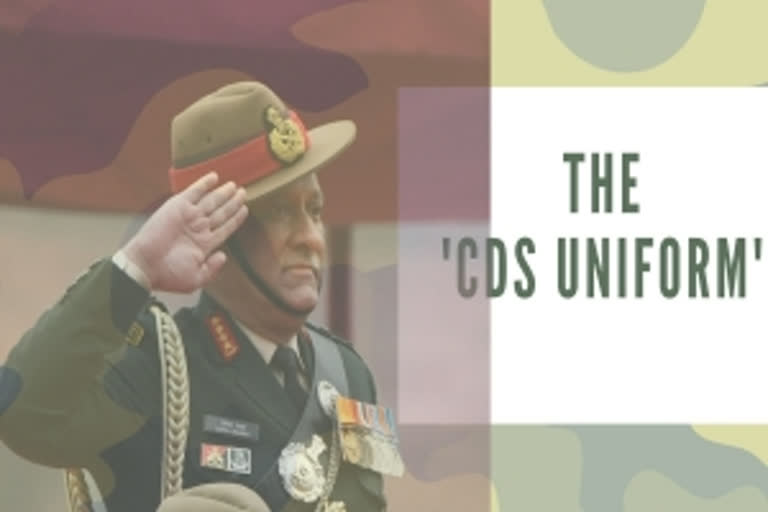Hyderabad: The dress says it all. The working uniform to be adorned by India’s first Chief of Defence Staff (CDS) General Bipin Rawat will stand for what India’s military primarily aims at—jointness, integration and synergy—and that is what the rank badges will reflect.
The insignia—also used by the Integrated Services Command, with the three-headed lion national emblem sitting atop the sword, the flying eagle and the anchor, representing respectively the army, air force and the navy—will be on the peak cap, the buttons, the belt buckle, the shoulder badges and even the flag car to be used by the CDS.

But CDS General Rawat, seated in his South Block office, will continue to wear the uniform of the 13 lakh strong army—the second biggest in the world. Comparatively, the Indian Navy has about 56,000 personnel in service while the Indian Air Force has about 1,40,000 men.
The government has been pursuing a policy to set up a single point window for advice on military matters and setting up of the CDS’ office is a result of that effort.
History too has been fairly encouraging. In the annals of Indian military’s joint operations, the Bangladesh liberation war of 1971—India’s most decisive military victory till date—stands out as a shining example, amply demonstrating what effective coordination between the three services can achieve.
Air Chief Marshal PC Lal (Retd) had remarked, “The Bangladesh war demonstrated that the three Services working closely together were strong and decisive in their actions. Inter-Services cooperation was indeed the most important lesson of that war”.
In the foreword to the Indian Joint Military Doctrine document in 2017, the then Chairman of the Staff Committee and Navy chief Admiral Sunil Lanba had said, “The rapidly changing character of conflict is constantly throwing up new challenges thereby, behoving on the Indian Armed Forces to remain operationally current, agile, efficient and utilise scarce resources in an optimised manner...An assessment of these challenges has yielded the need to have centralised policy structures, coordinated operational planning and control in certain common functions in the three services.”
Without a doubt, the country’s first CDS will be working towards that.
Also Read: Gen Rawat faces challenging task as India's first CDS



